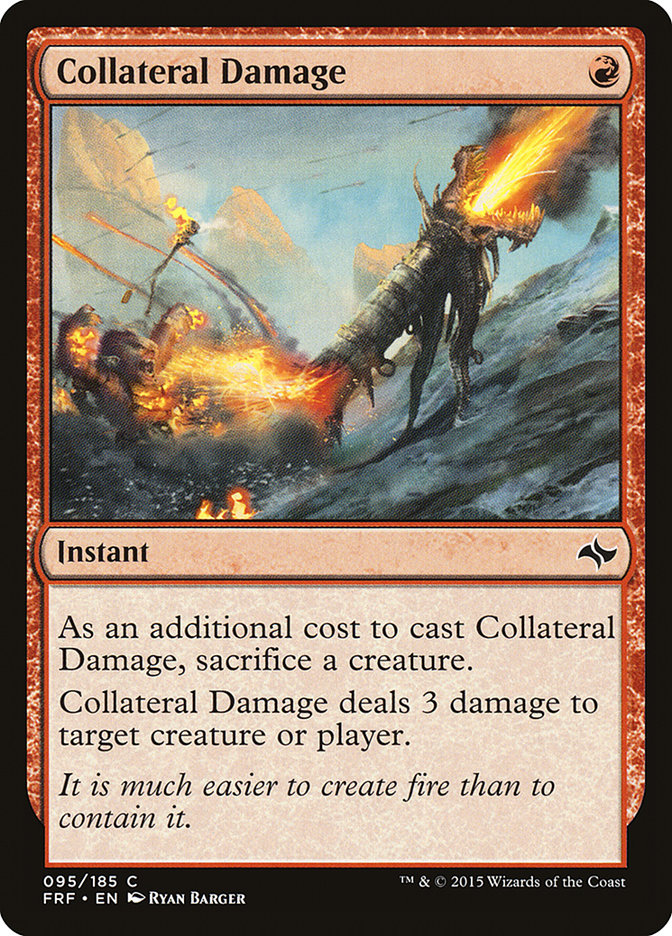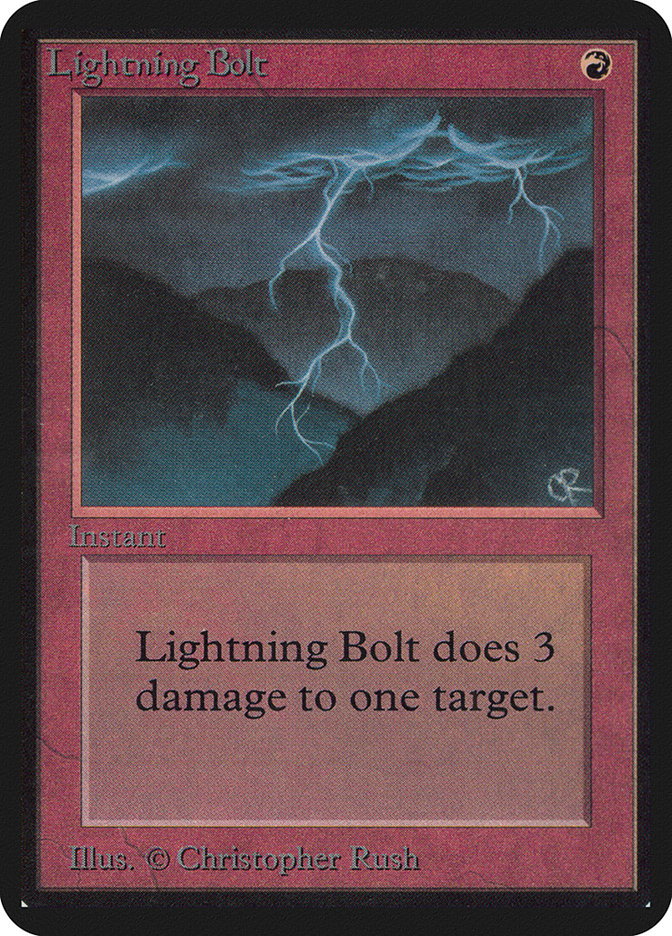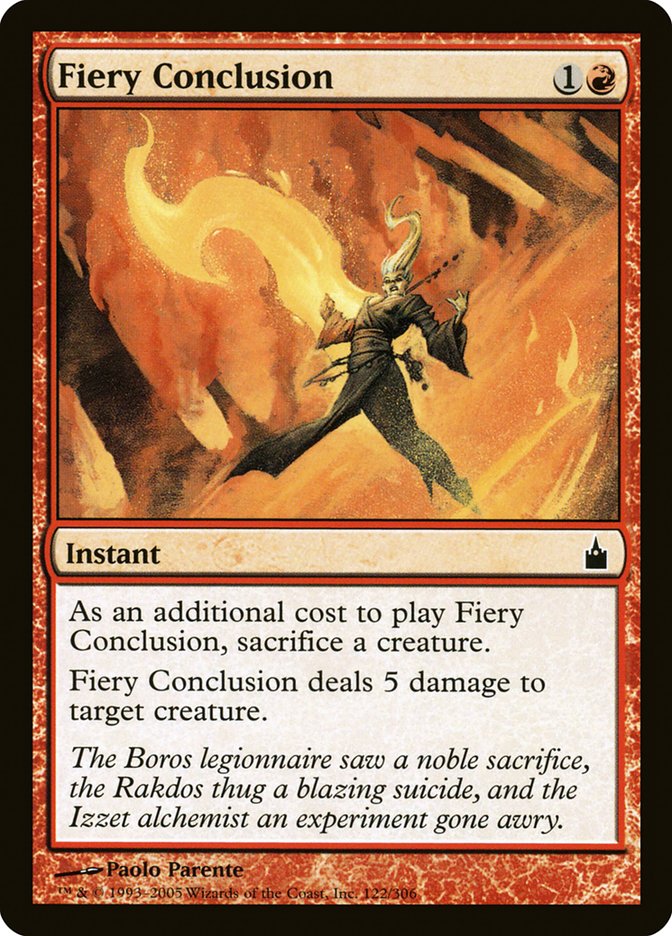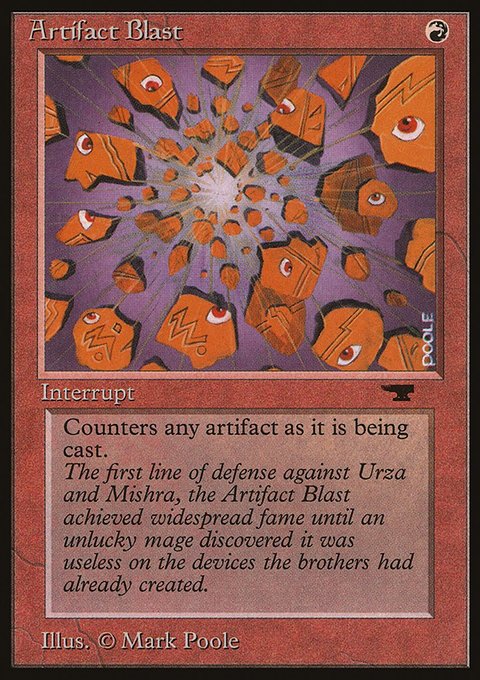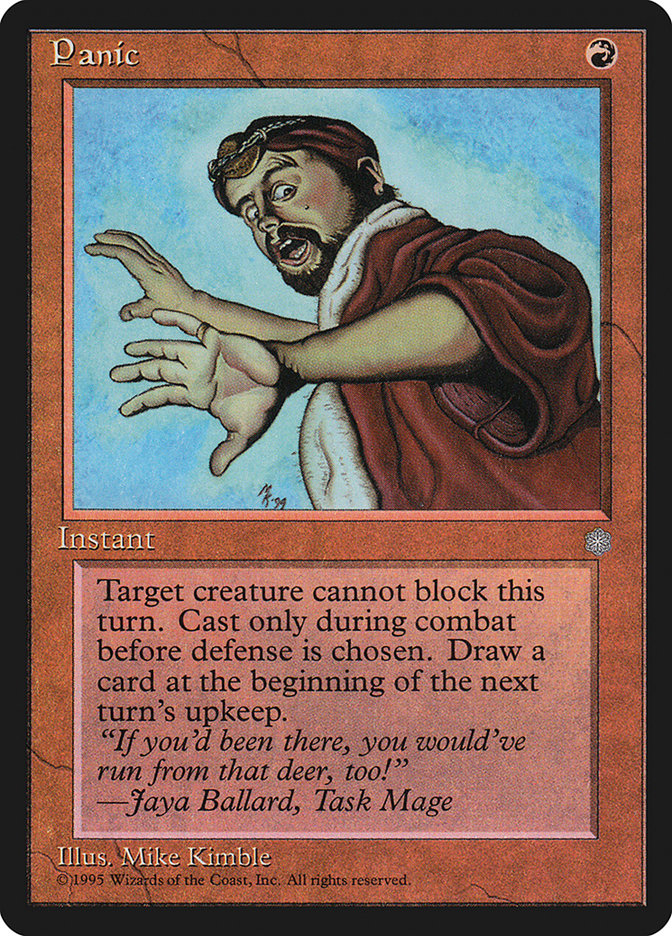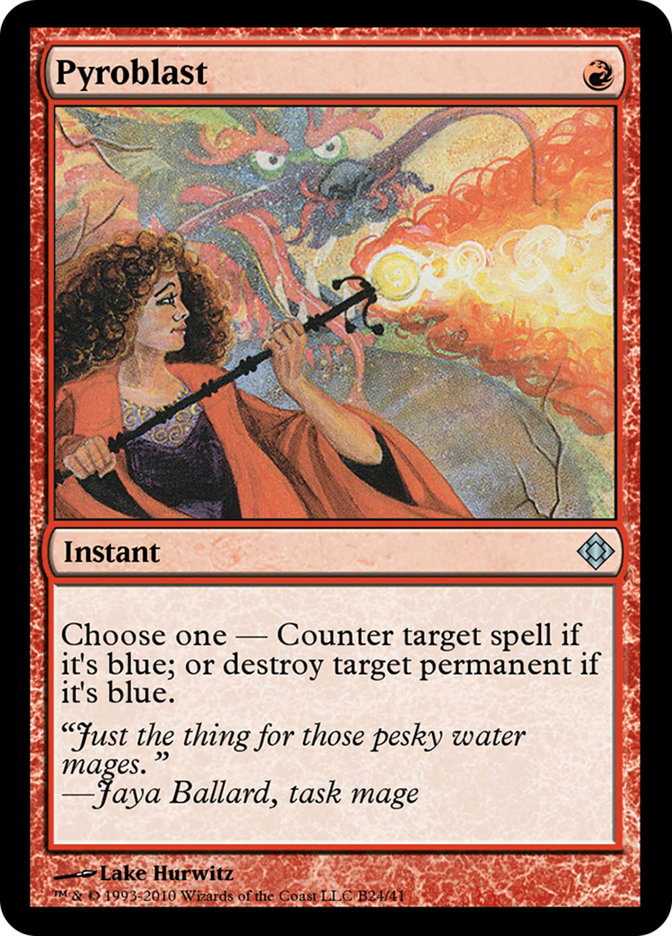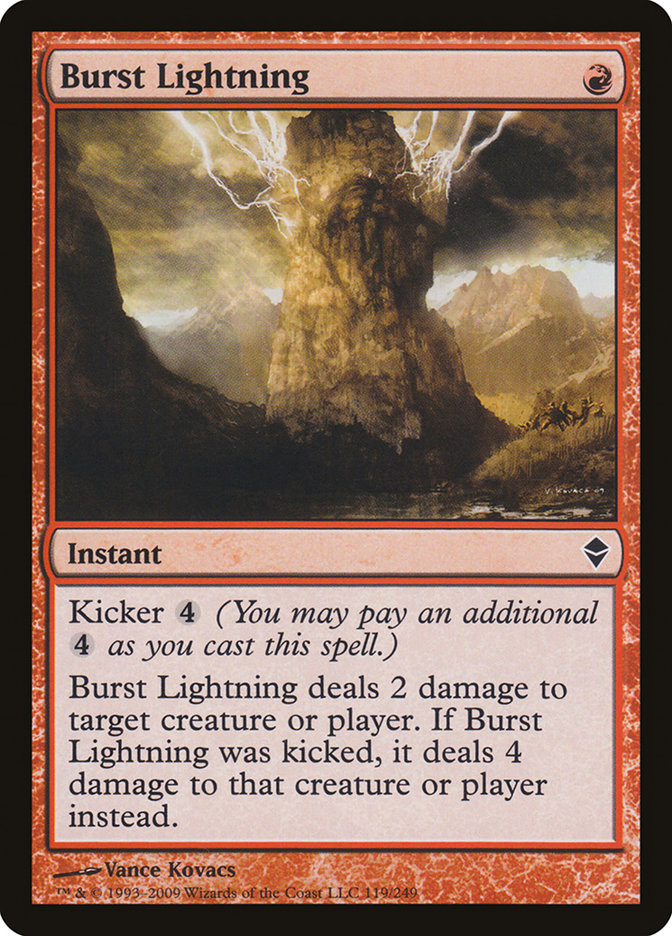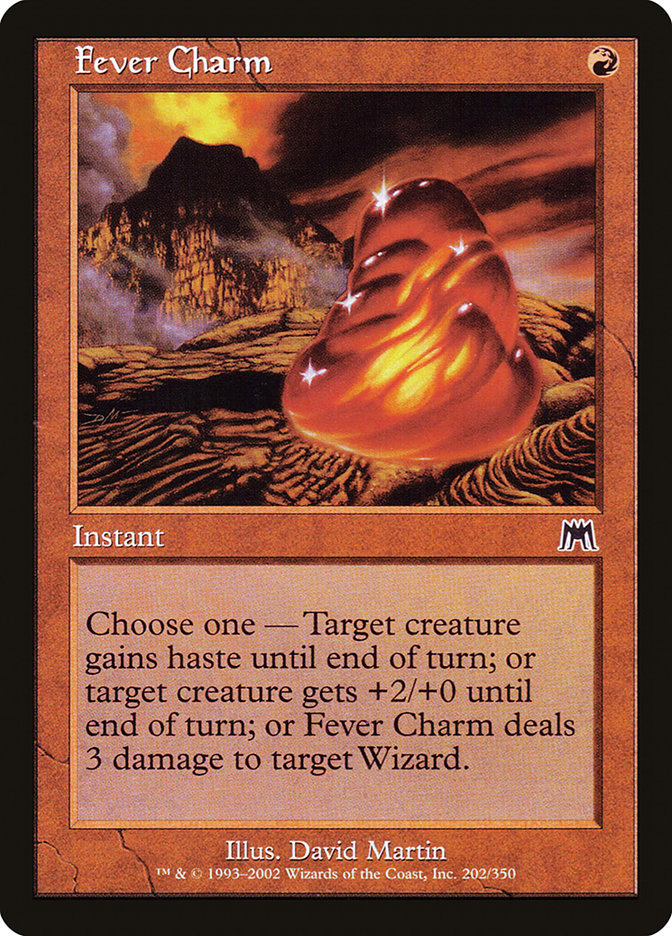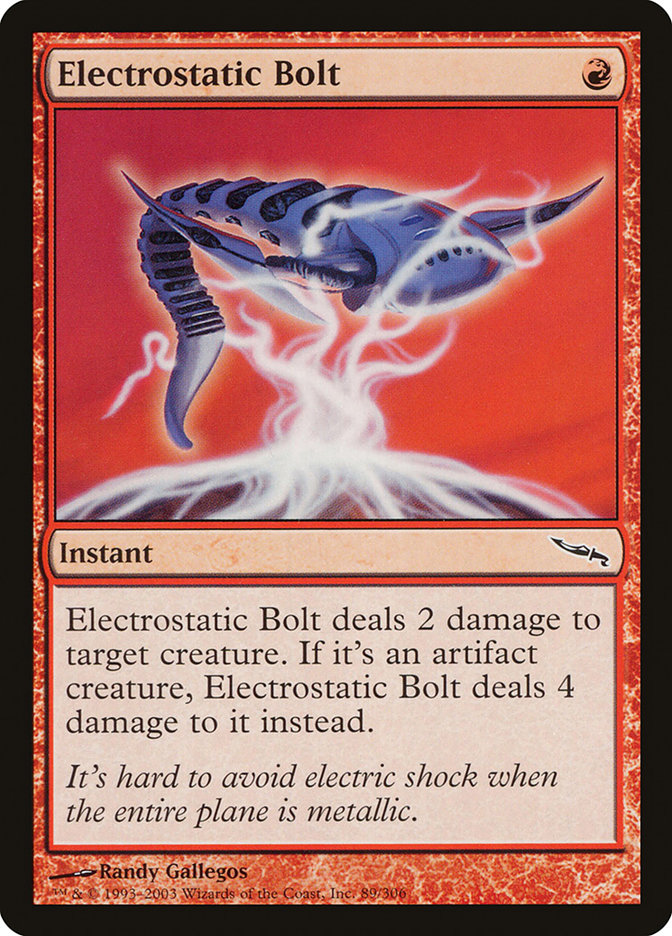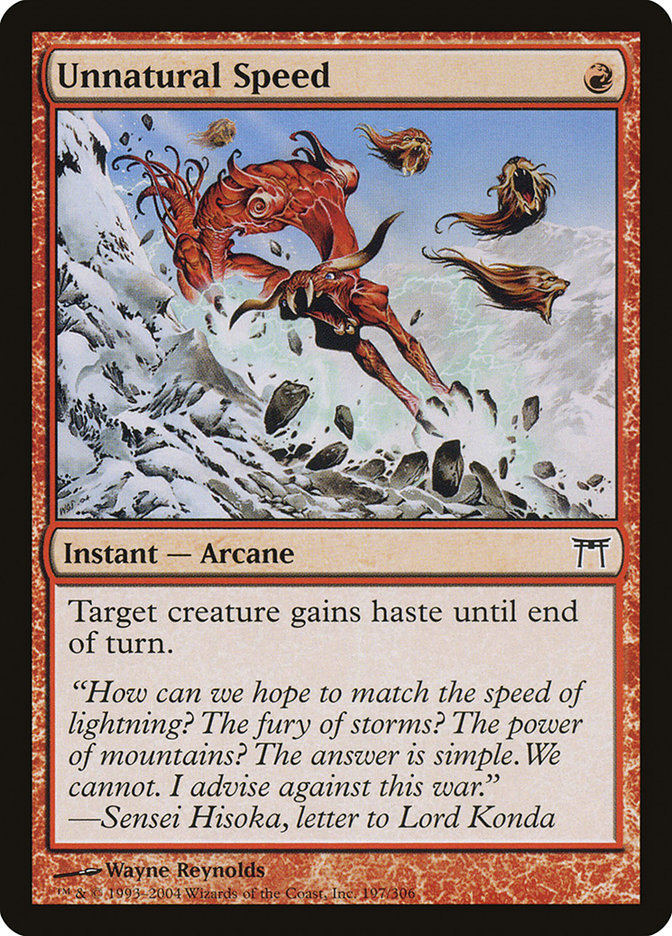Collateral Damage MTG Card
| Card sets | Released in 2 setsSee all |
| Mana cost | |
| Converted mana cost | 1 |
| Rarity | Common |
| Type | Instant |
Text of card
As an additional cost to cast Collateral Damage, sacrifice a creature. Collateral Damage deals 3 damage to target creature or player.
It is much easier to create fire than to contain it.
Cards like Collateral Damage
Collateral Damage stands out in the realm of direct damage spells in Magic: The Gathering. It bears similarities to the card Lightning Bolt, a fan favorite for its cost-effective one mana price point to deal three damage to any target. Where Collateral Damage diverges is in its additional cost of sacrificing a creature, which, while seen as a downside compared to the straightforward efficiency of Lightning Bolt, can also be leveraged as an advantage in decks designed to benefit from creatures leaving the battlefield.
In the same conversation of creature-sacrifice for effect, we encounter Fiery Conclusion. This card operates on similar mechanics as Collateral Damage but requires two mana and specifies the damage must be directed at a creature. The additional mana cost and restriction on targets differentiate it from Collateral Damage, which offers more flexibility and potential for sudden plays against opponents.
Assessing the strategic implications of Collateral Damage, it holds its ground in multiple scenarios, providing players with the potential for game-changing plays. Its unique requirement for a creature sacrifice can turn an otherwise unprofitable situation into a surprising advantage, marking its worth within its niche in Magic: The Gathering.
Cards similar to Collateral Damage by color, type and mana cost
Decks using this card
MTG decks using Collateral Damage. Dig deeper into the strategy of decks, sideboard cards, list ideas and export to play in ARENA or MOL.
| # | Name | Format | Archetype | Event |
|---|---|---|---|---|
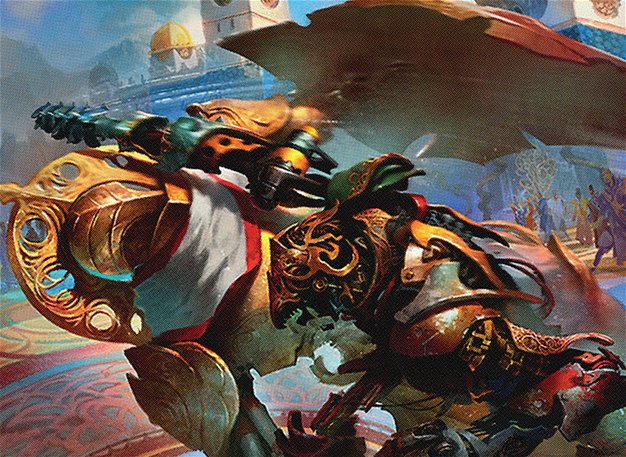 | Mono-Red Aggro | Pioneer | Mono-Red Aggro | Pioneer Super Qualifier 2023-12-29 |
Card Pros
Card Advantage: Collateral Damage offers a quick and efficient way to increase your card value over your opponent. By sacrificing a single creature, you can deal 3 damage to any target. This can be a turning point, especially if the creature sacrificed has already served its purpose or has an ability that triggers upon death.
Resource Acceleration: Despite not directly providing mana, using Collateral Damage can be considered a form of resource acceleration. It clears the path by removing key creatures or planeswalkers and allows your forces to attack unabated, speeding up your victory.
Instant Speed: The versatility of casting this card at instant speed cannot be overstated. Responding to enemy moves, utilizing untapped mana efficiently, or simply sealing the game when your opponent least expects it—Collateral Damage is a tool of surprise and tactical depth in any MTG player’s arsenal.
Card Cons
Discard Requirement: Collateral Damage demands that you discard a card to activate its ability, potentially depleting your hand when you might need those resources for future plays.
Specific Mana Cost: Having a cost that specifically requires red mana can restrict the decks that can optimally run Collateral Damage, confining it mainly to red or red-inclusive deck strategies.
Comparatively High Mana Cost: While dealing three damage to any target is a strong effect, the need to both discard a card and spend one red mana can feel costly when there are alternatives available that may not have such stringent costs attached.
Reasons to Include in Your Collection
Versatility: Collateral Damage serves as a flexible removal option in various red decks that can capitalize on sacrificing creatures, particularly those that might benefit from a creature leaving the battlefield.
Combo Potential: This card can become a key component in strategies that rely on tokens or creatures with death triggers, turning what would be a mere chump blocker into a sudden burst of damage towards an opponent or a problematic creature on their side.
Meta-Relevance: In a game state where aggressive strategies are prevalent, having a low-cost instant answer that also doubles up as a potential finisher can give you an edge, making Collateral Damage a smart addition against decks that leave little room for error.
How to beat
Collateral Damage is a card known for its potential to turn the tide in Magic: The Gathering by allowing a player to deal damage directly by sacrificing a creature. This card might seem daunting due to its low cost and its instant speed, which allows it to be played on an opponent’s turn or in response to their actions. Despite its power, beating Collateral Damage involves strategic play.
To counteract this card, it’s crucial to minimize viable targets for sacrifice. Employ removal spells or effects that exile creatures from your opponent’s battlefield before they can become ammunition for Collateral Damage. Prioritize creatures with strong enter-the-battlefield effects or those that provide advantages even in death. Moreover, controlling the pace of the game can limit the opportunities for your opponent to use Collateral Damage effectively. Avoid over-committing creatures to the board unless necessary, as it reduces the chances of your opponent gaining maximum value from the card.
Understanding the right moment to challenge your opponent’s resources and applying thoughtful board control can significantly undermine the impact of Collateral Damage in a game of Magic: The Gathering.
Where to buy
If you're looking to purchase Collateral Damage MTG card by a specific set like Fate Reforged and Jumpstart, there are several reliable options to consider. One of the primary sources is your local game store, where you can often find booster packs, individual cards, and preconstructed decks from current and some past sets. They often offer the added benefit of a community where you can trade with other players.
For a broader inventory, particularly of older sets, online marketplaces like TCGPlayer, Card Kingdom and Card Market offer extensive selections and allow you to search for cards from specific sets. Larger e-commerce platforms like eBay and Amazon also have listings from various sellers, which can be a good place to look for sealed product and rare finds.
Additionally, Magic’s official site often has a store locator and retailer lists for finding Wizards of the Coast licensed products. Remember to check for authenticity and the condition of the cards when purchasing, especially from individual sellers on larger marketplaces.
Below is a list of some store websites where you can buy the Collateral Damage and other MTG cards:
 BUY NOW
BUY NOW BurnMana is an official partner of TCGPlayer
- eBay
- Card Kingdom
- Card Market
- Star City Games
- CoolStuffInc
- MTG Mint Card
- Hareruya
- Troll and Toad
- ABU Games
- Card Hoarder Magic Online
- MTGO Traders Magic Online
See MTG Products
Printings
The Collateral Damage Magic the Gathering card was released in 2 different sets between 2015-01-23 and 2020-07-17. Illustrated by Ryan Barger.
| # | Released | Name | Code | Symbol | Number | Frame | Layout | Border | Artist |
|---|---|---|---|---|---|---|---|---|---|
| 1 | 2015-01-23 | Fate Reforged | FRF | 95 | 2015 | Normal | Black | Ryan Barger | |
| 2 | 2020-07-17 | Jumpstart | JMP | 305 | 2015 | Normal | Black | Ryan Barger |
Legalities
Magic the Gathering formats where Collateral Damage has restrictions
| Format | Legality |
|---|---|
| Historicbrawl | Legal |
| Historic | Legal |
| Legacy | Legal |
| Paupercommander | Legal |
| Oathbreaker | Legal |
| Gladiator | Legal |
| Pioneer | Legal |
| Commander | Legal |
| Modern | Legal |
| Pauper | Legal |
| Vintage | Legal |
| Duel | Legal |
| Explorer | Legal |
| Penny | Legal |
| Timeless | Legal |
Rules and information
The reference guide for Magic: The Gathering Collateral Damage card rulings provides official rulings, any errata issued, as well as a record of all the functional modifications that have occurred.
| Date | Text |
|---|---|
| 2014-11-24 | If you sacrifice an attacking or blocking creature during the declare blockers step, it won’t deal combat damage. If you wait until the combat damage step, but that creature is dealt lethal damage, it’ll be destroyed before you get a chance to sacrifice it. |
| 2014-11-24 | Players can respond to Collateral Damage only after it’s been cast and all its costs have been paid. No one can try to destroy the creature you sacrificed to stop you from casting this spell. |
| 2014-11-24 | You must sacrifice exactly one creature to cast this spell; you can’t cast it without sacrificing a creature, and you can’t sacrifice additional creatures. |
